Seen 'Oppenheimer'? Learn About Columbia's Role in Building the First Atom Bomb
Columbia scientists played a substantial role in the Manhattan Project and in the research that preceded it.
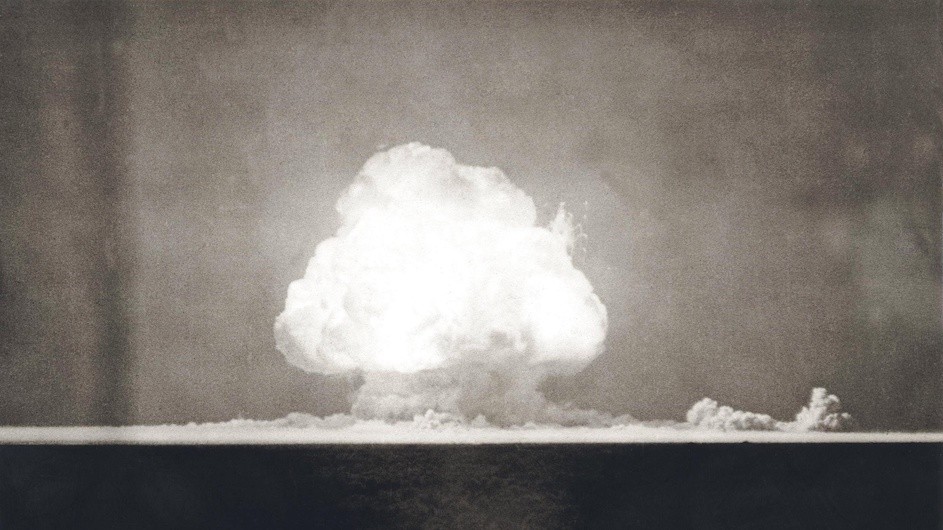
Whether you’re a seasoned Columbia faculty member or a fresh-eyed incoming freshman, you may have wondered as you stumbled into the humid night after catching a showing of Christopher Nolan’s overwhelming new cinematic opus “Oppenheimer" this weekend:
“What role did the institution to which I belong play in this history-altering project? It is, after all, called the Manhattan Project. What,” you asked yourself, “does that have to do with the movie I just watched, which took place largely across the country in California, and at Los Alamos, in New Mexico?”
Columbia News is here to clarify.
“Oppenheimer” focuses on Robert Oppenheimer’s early physics education in Europe; his growing understanding of and experiments with nuclear fission at the University of California Berkeley in the lead up to and start of World War II; and his years creating and leading the Los Alamos National Laboratory, a remote site in New Mexico, where he oversaw a team of scientists in creating the world’s first nuclear weapons.
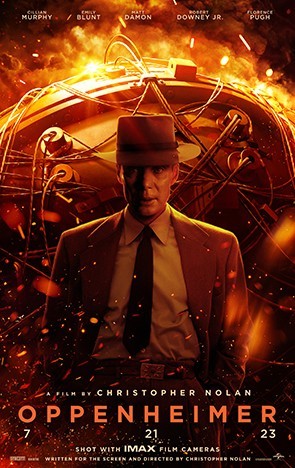
Columbia Physics faculty had been researching the prospect of atom splitting throughout the 1930s, but their involvement in what was to become the Manhattan Project began in earnest at the same moment Oppenheimer and his fellow Berkeley faculty members did: in 1939, just months before World War II broke out, when the Danish physicist Niels Bohr traveled to the United States, bringing with him the news that German scientists had just blasted uranium with neutrons, creating barium, a lighter element, in the process. It was the first time that scientists had deliberately induced nuclear fission, in which an atom’s nucleus splits apart, creating a new element, and releasing energy.
Upon arriving in the U.S., Bohr reported his news, and word of the discovery quickly spread among Columbia’s physics faculty, which included II Rabi, Enrico Fermi, Willis Lamb, and John R. Dunning. A team that included both Fermi and Dunning promptly conducted their own experiment in which they bombarded uranium oxide with neutrons, releasing bursts of energy using a custom-built cyclotron that Dunning had created to set particles speeding at up to 25,000 miles per second. (“Oppenheimer” depicts a similar confirmation of the German experiment at Berkeley.)
These first instances of splitting atoms released energy, but it was far short of the scale needed to create an atomic bomb. Still, the discovery opened the door for the possibility of a nuclear chain reaction, in which millions of atoms would split in fractions of a second, releasing the vast amounts of energy needed to power a nuclear weapon.
Other Columbia scientists joined the fray. Leo Szilard and Walter Zinn conducted an experiment in which they confirmed that uranium fission emitted neutrons, which could spark a nuclear chain reaction. (Fermi and a graduate student confirmed similar findings in a separate experiment.)
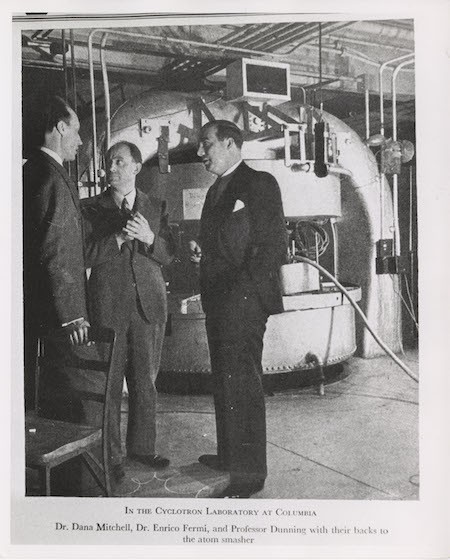
Concerned with the gargantuan implications of these experiments, Columbia professors sounded the alarm in Washington, D.C. Dean of Faculties George Braxton Pegram; Edward Teller, who was teaching at Columbia; and Szilard were among those who raised the issue to the federal government. Though the military at first ignored Pegram’s warnings, President Franklin D. Roosevelt took action after receiving a letter sent by Albert Einstein at the urging of Columbia professors, including Szilard. The president created an Advisory Committee on Uranium, and issued Columbia $6,000 in research money. It was the first federal contract to explore atomic energy.
The faculty used the money to buy graphite. Fermi and Szilard worked together to use graphite, which can slow neutrons, to isolate the neutrons emitted by fission—a necessary step for achieving a nuclear chain reaction. The pile of graphite mixed with some uranium oxide that they used to this end is often credited as the first atomic pile, or nuclear reactor.
Fermi’s initial work took place mostly in Pupin Hall, but, when he needed more space, he turned to members of the football team, who were hired to carry the materials across campus to Schermerhorn. “It really was a pleasure to direct the work of these husky boys,” he was later quoted as saying.
Dunning, meanwhile, worked with his own team of scientists, including the chemist Harold Urey, to develop a process called gaseous diffusion, a separate method of isolating enough of the necessary kind of uranium to ignite a nuclear chain reaction. The method was based in part on Dunning’s discovery that U235, a relatively rare, unstable isotope of uranium, was easier to fission and more suitable for use in a weapon than the more ubiquitous and stable U238 isotope.
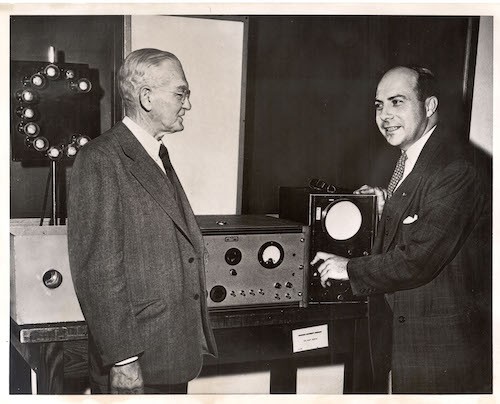
The government officially established the Manhattan Project in August 1942. The project was headquartered out of a building near City Hall, and oversaw research efforts that quickly proliferated across the country. At its peak, the project is said to have employed about 5,000 people across New York, including 700 at Columbia.
But the Manhattan headquarters was short-lived: In 1943, the government moved the project headquarters to Tennessee, at least in part because of security concerns about conducting the research in densely populated Manhattan, which could potentially be reached by an enemy submarine, and was seen as more easily subject to spying. Los Alamos opened for operation that same year, and became the project’s primary research and testing site.
Columbia, Hollywood, and the Manhattan Project
Although the project’s nexus wandered west across the country through the war, Columbia faculty remained involved until the end: II Rabi, who is played in the movie by David Krumholtz, declined to join the project as associate director, but served as an adviser to Oppenheimer through 1945, a decision depicted in a scene in the movie. In 1944, Chien-Shiung Wu, often referred to as the first lady of physics, joined Columbia, and conducted research for the Manhattan project on areas such as uranium enrichment. In the waning days of the war, early computer technology developed at Columbia was used to help make calculations necessary for the development of the bomb. Szilard, who conducted early experiments at Columbia before moving to Chicago, was the lead author of a major petition from scientists who tried to stop the bomb from being dropped on Japan, an effort that features in the film.
Robert Serber, who is played in the movie by Michael Angarano, trained new Los Alamos recruits. He joined the Columbia faculty after the war, and was in Los Alamos in July 1945 for “Trinity,” the first successful test of a nuclear bomb. “Looking at it was like looking at the end of the world,” the Columbia Spectator quoted him as saying in 1993.
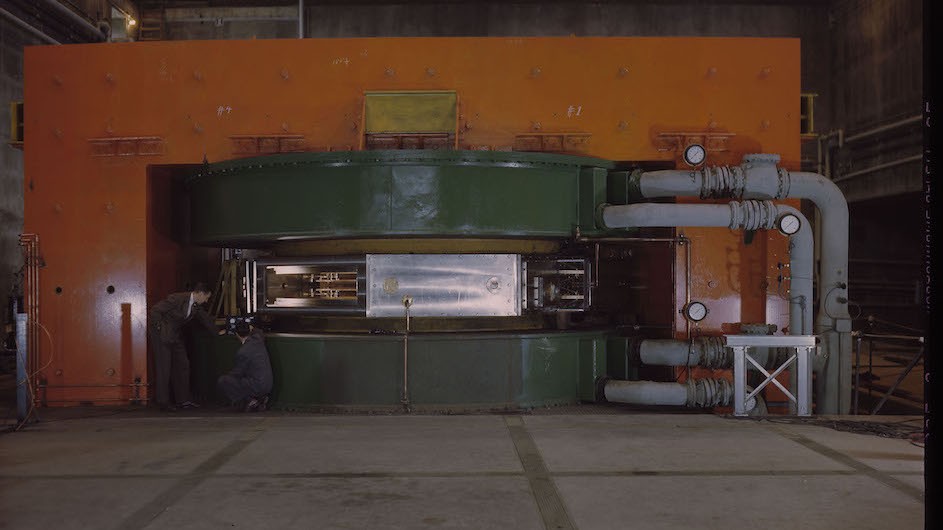
Oppenheimer was never professionally affiliated with Columbia, although he grew up on the Upper West Side and his mother taught at Barnard. He did make a public appearance at the University in 1954, to deliver a speech on “Prospects in the Arts and Sciences.” Months earlier, the government had stripped Oppenheimer of his security clearance because of suspected ties to Communism, a process that the movie depicts in detail (the Department of Energy apologized for and vacated that decision in 2022). Oppenheimer used the occasion to argue that the arts and sciences should aim to achieve peace.
“There has always been more to know than one man could know; there has always been a mode of feeling, many modes of feeling, that could not move the same heart; there have always been deeply held beliefs that could not be composed into a synthetic union,” Oppenheimer said in his speech: “Both the man of science and the man of art live always at the edge of mystery, surrounded by it.”